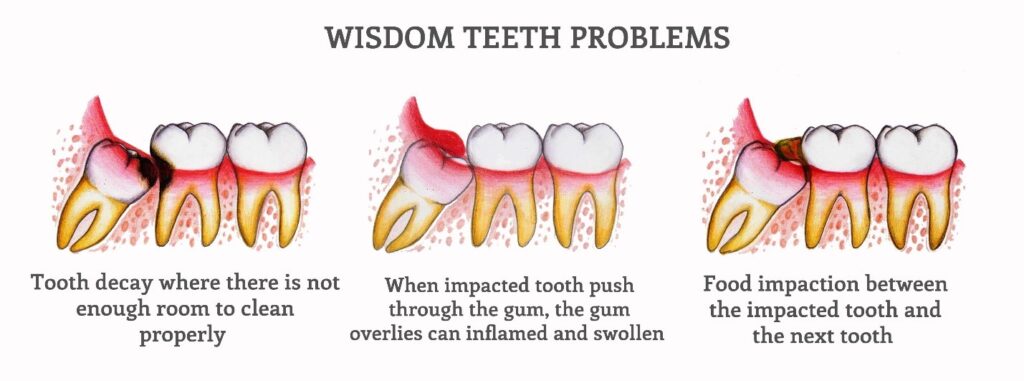DENTAL SURGERY
Tooth Extraction
The main goal of dentistry is to preserve your natural teeth and keep them healthy for as long as possible. However, there are still some occasions when a tooth may need to be extracted. A tooth may need to be extracted if the following occurs:
- Trauma – crack tooth due to trauma sometimes can be challenging to treat because we don’t know how far the crack line is. It might be better to remove the tooth and replace it with a strong and lifelike dental implant picture
- Orthodontic treatment – teeth are sometimes extracted when we need a space to align the remaining teeth properly.
- Impacted wisdom tooth – wisdom teeth that have become impacted or haven’t fully broken through the surface of the gum need to be extracted. Food and bacteria can get trapped around the edge of the wisdom teeth, causing a build-up of plaque, which can lead to tooth decay, gum disease or other problems.
- Baby teeth – persistency of baby teeth can cause the permanent tooth underneath not erupt normally. In this case, removing the baby teeth will prevent a need for using orthodontic appliance later on.
First, your dentist will take an x-ray to assess the position of the tooth root and surrounding bone. This will allow any possible complications to be anticipated. Tooth extraction is usually carried out with local anesthesia. After your tooth is extracted, it’s normal to feel a certain amount of pain and discomfort which can be minimized with pain killer. Within a few days, all should be back to normal.
Odontectomy (Wisdom Tooth Removal)
Wisdom teeth are another name for third molars found in the permanent dentition. These teeth are the last or most posterior teeth in the dental arch. Not all wisdom teeth need to be extracted. When a wisdom tooth erupts cleanly through the tissue without compromising the adjacent tooth, the wisdom tooth can be retained in the mouth with little concern as long as the person is able to brush, floss, and clean it thoroughly. However, in some case, our dental arc is lack of space and the wisdom teeth can sometimes emerge at an angle or get stuck and only emerge partially. Wisdom teeth that grow through in this way are known as impacted and need to be removed
A wisdom tooth extraction is a relatively routine procedure. Before the procedure, you will usually be given a local anesthetic injection to numb the area around the tooth. In some cases a cut (incision) may be needed in your gum and the tooth may need to be cut into smaller pieces before it is removed. The time it takes to remove the tooth will vary. Some procedures only take a few minutes, whereas others can take 20 minutes or longer.
After your wisdom tooth has been removed, you may experience swelling and pain. This is usually worse for the first three days, but it can last for up to two weeks. However, you should call your dentist if you have prolonged or severe pain, swelling, bleeding or fever.
Reason why you need to remove your wisdom tooth

Still need help about the details of the dental treatment?
Come and visit us now. We will help you to solve your doubts and problems. Click the button below to contact us.
